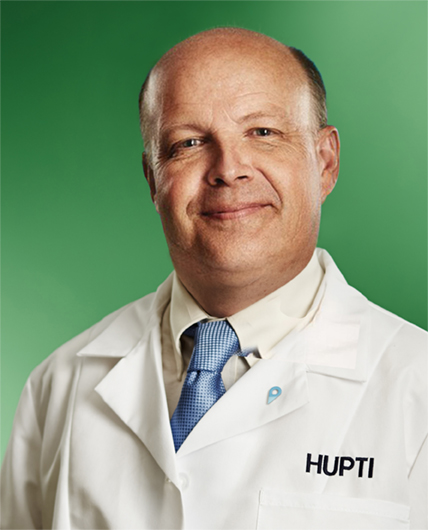Hampton University Proton Therapy Institute

Dr. Allan Thornton is not only a nationally-recognized radiation oncologist and researcher with 30-plus years of experience in proton therapy, he is also a major reason why many cancer patients have access to the treatment at all.
In the late 1990s and early 2000s, Dr. Thornton lobbied extensively to secure Medicare coverage of proton therapy. As private insurance companies gradually followed, freestanding facilities could afford to open in multiple new locations.
One such place was the Hampton University Proton Therapy Institute (HUPTI) & SAH Care, where Dr. Thornton has practiced since 2010. HUPTI has treated more than 3,500 patients since opening that year.
“This very effective treatment had been previously locked up in the ivory tower, not accessible to most of the country,” Dr. Thornton relates. “Changing that really became my mission.”
In Virginia, Dr. Thornton also was instrumental in a four-year push for General Assembly approval of a 2017 bill stating insurance companies could not deny a patient for proton therapy based solely on cost.
A pioneer in his specialty, Dr. Thornton treats a variety of cancers in adults and children with proton therapy, with a specialization in head, neck, and brain tumors. He even facilitated the treatment of his own father for prostate cancer.
Born in Washington, D.C., Dr. Thornton completed his medical degree at the University of Virginia and his residency at the Ontario Cancer Institute in Toronto. He taught at the University of Michigan Medical Center for four years before joining the faculty at Harvard Medical School and Massachusetts General Hospital in 1991.
From 1993 to 1997, Dr. Thornton served as the Radiotherapy Director of the Central Nervous System and Stereotactic Radiosurgery Program at Harvard Cyclotron Laboratory, the first such particle accelerator in the nation. He also was a Director of Massachusetts General’s Coronary Irradiation Brachytherapy Program.
In those early years, proton therapy was limited to two locations in the United States: the Harvard program, funded by National Institutes of Health grants, and a center at Loma Linda Medical Center in California, which accepted the lower reimbursement rates for standard radiation therapy. These reimbursement methodologies made it difficult to expand the industry outside of the two initial coastal centers.
Proton therapy, which uses precision beams of positively-charged molecules, was approved by the FDA in 1998. The proton beam customarily treats 70 percent less normal tissue than X-ray radiation, leading to much fewer side effects, Dr. Thornton reports. The physical and medical advantages were never in question. However, since particle accelerators were so expensive, insurance companies initially balked at the reimbursement rates of this “emerging technology.”
For Dr. Thornton, the first step to change that barrier was a two-year effort to obtain unique proton-specific CPT codes from the American Medical Association (AMA). Working with Massachusetts General Hospital and Loma Linda University, he compiled 30 years of data from the Harvard Cyclotron and centers worldwide into a 400-page paper on safety and efficacy for the AMA.
Next came three more years of lobbying members of Congress – Sen. Bob Dole, a prostate cancer survivor, was an important ally – and the Centers for Medicare & Medicaid Services (CMS). Once the federal plans were on board, physicians were able to work with private insurance companies on individual patient cases.
Dr. Thornton helped raise $14 million to expand an existing proton research cyclotron at Indiana University, Bloomington, into the third proton medical center in the country, in 2004. He served as Medical Director/Founder of the Midwest Proton Radiotherapy Institute in Indiana for seven years. “It took much communication, and many appeals, to forge contracts with each carrier in those early days,” Dr. Thornton relates. “We did many seminars for CMS and insurance representatives.”
Dr. Thornton expects proton therapy to expand further as equipment cost decreases and technology becomes easier to use. “Largely due to the tremendous dedication of many professionals, including therapists, physicists, dosimetrists, nurses, and physicians, the field has progressed,” he notes. “It’s all been very worthwhile. We have the immense joy of seeing our patients treated 25 years ago as young adults return to us in follow-up with their growing families. There is no greater reward than being able to show compassion and to help your fellow man.”
Outstanding Achievements recognizes a local physician for accomplishments in the areas of education, medical innovations or introduction of new treatments and technologies to the region. It is our honor to recognize these accomplishments.
Please let us know if there is a physician who deserves recognition in this column. Email: holly@hrphysician.com

